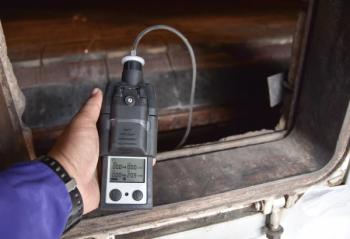
ATR-FT-IR Spectroscopy Offers a New Cost-effective Method for Pharmaceutical Heparin Analysis
In a recent study, attenuated total reflectance-Fourier transform infrared spectroscopy (ATR-FT-IR) was proven to be a cost-effective method for analyzing herapins in pharmaceutical applications.
Heparin is a widely used anticoagulant that plays a significant role in many clinical applications. Its quality and purity are important to its effectiveness and patient safety. In 2008, the global heparin supply was contaminated with oversulfated chondroitin sulfate (OSCS), leading to a significant increase in adverse effects and even deaths (1). Since that time, there has been an increased interest in developing new and improved analytical methods to detect contaminants and ensure the quality of pharmaceutical heparin (1).
A team of researchers from Keele University and the University of Liverpool in the United Kingdom has developed a new analytical method that utilizes attenuated total reflectance-Fourier transform infrared spectroscopy (ATR-FT-IR) combined with multivariate analysis for the analysis of heparin samples (1). The study, published in the ACS Central Science journal, highlights the potential of ATR-FT-IR as a cost-effective alternative to multidimensional nuclear magnetic resonance (NMR) spectroscopy techniques for heparin analysis (1).
The method developed by the researchers enables the differentiation of diverse glycosaminoglycan (GAG) samples, the classification of samples of distinct species provenance, and the detection of both established heparin contaminants and alien polysaccharides (1). The sensitivity of the method is comparable to that of NMR and can facilitate the rapid, cost-effective monitoring and analysis of pharmaceutical heparin throughout the supply chain (1).
Mark A. Skidmore, the lead author of the study, explains that ATR-FT-IR spectroscopy is a powerful tool for heparin analysis because of its sensitivity, specificity, and ability to analyze samples in the solid state (1). The method can detect both established and emerging contaminants in heparin samples, making it a valuable addition to the analytical toolkit for heparin quality control (1).
In their paper, the authors suggest that ATR-FT-IR spectroscopy could significantly reduce the cost and complexity of heparin analysis (1). They also say that it could be used in routine quality control testing of pharmaceutical heparin, which would help to ensure the safety and efficacy of heparin-based therapies and mitigate the risks associated with contaminated heparin (1).
Overall, this study demonstrates the potential of ATR-FT-IR spectroscopy combined with multivariate analysis as a new, cost-effective, and rapid method for the analysis of pharmaceutical heparin. As a result, it could contribute significantly to the efforts to ensure the safety and efficacy of heparin-based therapies.
Reference
(1) Devlin, A. J.; Mycroft-West, C. J.; Turnbull, J.E.; de Lima, M. A.; Guerrini, M.; Yates, E. A.; Skidmore, M. A.Analysis of Heparin Samples by Attenuated Total Reflectance Fourier-Transform Infrared Spectroscopy in the Solid State. ACS Cent. Sci. 2023, 9 (3), 381–392. DOI:
Newsletter
Get essential updates on the latest spectroscopy technologies, regulatory standards, and best practices—subscribe today to Spectroscopy.





